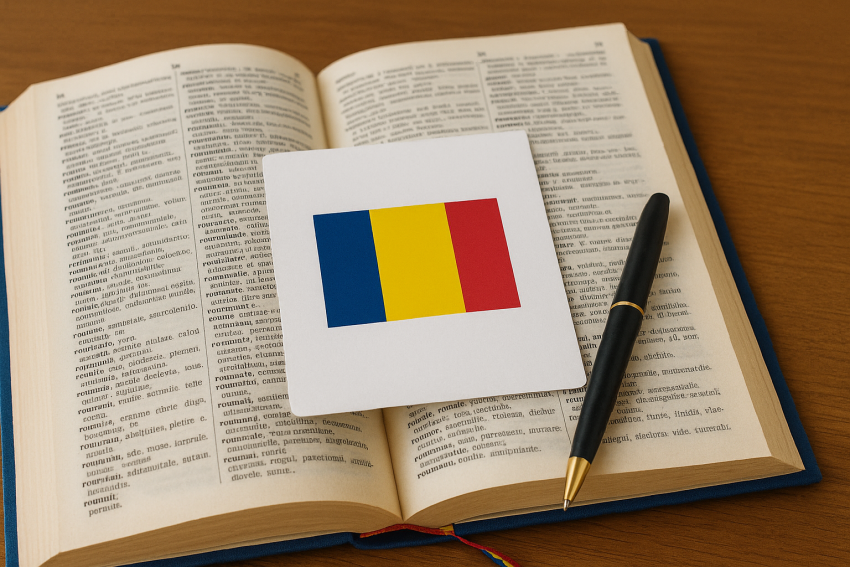Key strategies for a successful translation into Romanian

Índice de contenidos
Index of contents
Index du contenu
Inhaltsverzeichnis
Indice dei contenuti
With over 25 million speakers in Romania, Moldova and in the diaspora, Romanian has been one of the official languages of the European Union since 2007. For companies wishing to target the Romanian-speaking markets, translating into this language is not just a linguistic need, it is a strategic approach that improves credibility, demonstrates cultural proximity,and opens doors to potential clients and partners.
The linguistic peculiarities of Romanian: what you need to know
One of the specific qualities of Romanian that makes this language so unique is that it uses so-called postposed determiners. Unlike many other languages, Romanian does not place its determiners before the noun as is the case in English or Spanish, but adds a suffix after the noun. For example, băiat means ‘boy’. To translate ‘the boy’ into Romanian, the suffix ‘-ul’ is added to the noun to indicate the definite article. This gives us ‘băiatul’. Moreover, it is common to omit the determiner in Romanian, especially in spoken language. Context therefore plays a key role in understanding and accurately translating content into Romanian.
Over time, the Romanian lexicon has been greatly enriched over time through the borrowing of words from Slavic languages. Indeed, its proximity to its neighbours has led it to adopt certain terms from the Turkish, Hungarian and Greek languages. In the 19th century, the Romanian language was then ‘re-latinised’ by incorporating French words. The process was partly carried out naturally, but it was also a deliberate effort by the country to align itself with France, which was perceived as a model of progress and modernity at the time. These different influences enrich the language, but also represent a challenge when translating texts into Romanian.
Romanian is also marked by strong regional variations as well as a unified and standardised administrative usage. A good translation must take this variability into account to adapt the level of language, idiomatic expressions and cultural references. For example, a marketing campaign aimed at young people must adapt to the targeted regional variation, while an administrative document must adhere to standardised usage. Therefore, adapting the style is as important as lexical accuracy, particularly for marketing or institutional content.
Romanian translation: man vs. machine, who wins?
It may sometimes seem advantageous to choose a machine translation for documents, but it is not always (and rarely) the most suitable solution.
Machine translators are quick and affordable tools, they may be suitable for internal use or understanding the general idea of a text. However, they have many limitations: poor context management, misinterpretations, awkward syntax and lack of human revision. Using a machine translator thus very often produces incomprehensible, contradictory texts or with altered meaning.
On the other hand, human translation is essential when it comes to professional, legal, technical or commercial documents. Human translators know how to manage subtleties, harmonise tone, adapt the content to the target audience and respect industry terminology. Moreover, they can offer stylistic variations to optimise the impact of the message in an intercultural context.
In short, it is possible to translate some elements occasionally using a machine translator. However, if it is a professional document, it is advisable to use a human translator to ensure translation quality and correct understanding of the message, especially in a complex language such as Romanian.
Why use a specialised translation agency for translating into Romanian
Using a specialised translation agency offers several advantages.
Firstly, translation agencies can offer you professional native translators, selected according to their field of expertise (legal, medical, technical, marketing, etc.). These translators will thus understand all the cultural references to best adapt your document to the customs of the Romanian market. Their specialisation will allow them to produce an accurate and precise translation in terms of expressions and terminology in your chosen field.
Furthermore, translation agencies follow rigorous quality processes, guaranteeing a certain level of quality for the client. Documents undergo, among other things, proofreading, peer reviews, terminological verifications and methodological project management. All these steps significantly reduce the risk of error or inconsistency and make translation agencies trustworthy partners.
Regarding official documents, patents, contracts, or immigration documents, there is no other choice but to use a certified and sworn translator. Certified and sworn translations allows institutions to trust your documents and receive them legally. An machine translation will never provide you with this type of certification. You can find these services at translation companies for all your affairs involving the Romanian language.
Finally, translation companies must comply with standards, synonymous with quality guarantees for the client. Compliance with ISO standards, such as ISO 17100, signifies rigorous processes in project management of translation services and ensures that providers must possess the qualifications and linguistic skills required. On the other hand, data protection ensures that clients' confidential information is handled securely and in compliance with regulations (such as the GDPR). Meeting deadlines demonstrates the commitment to deliver translations on time without compromising quality.
Consult our translation services to learn more. You will benefit from personalised advice, tailored support and technological solutions (translation memory, glossaries, CMS integration) to enhance your multilingual strategy.
Other articles you may be interested in:

Assistant marketing chez Abroadlink, Djobdi SAÏDOU est actuellement en deuxième année de Master Langues Étrangères Affaires Internationales à l'Université de Lorraine. Il est également titulaire d'une licence de langues étrangères appliquées.



Add new comment